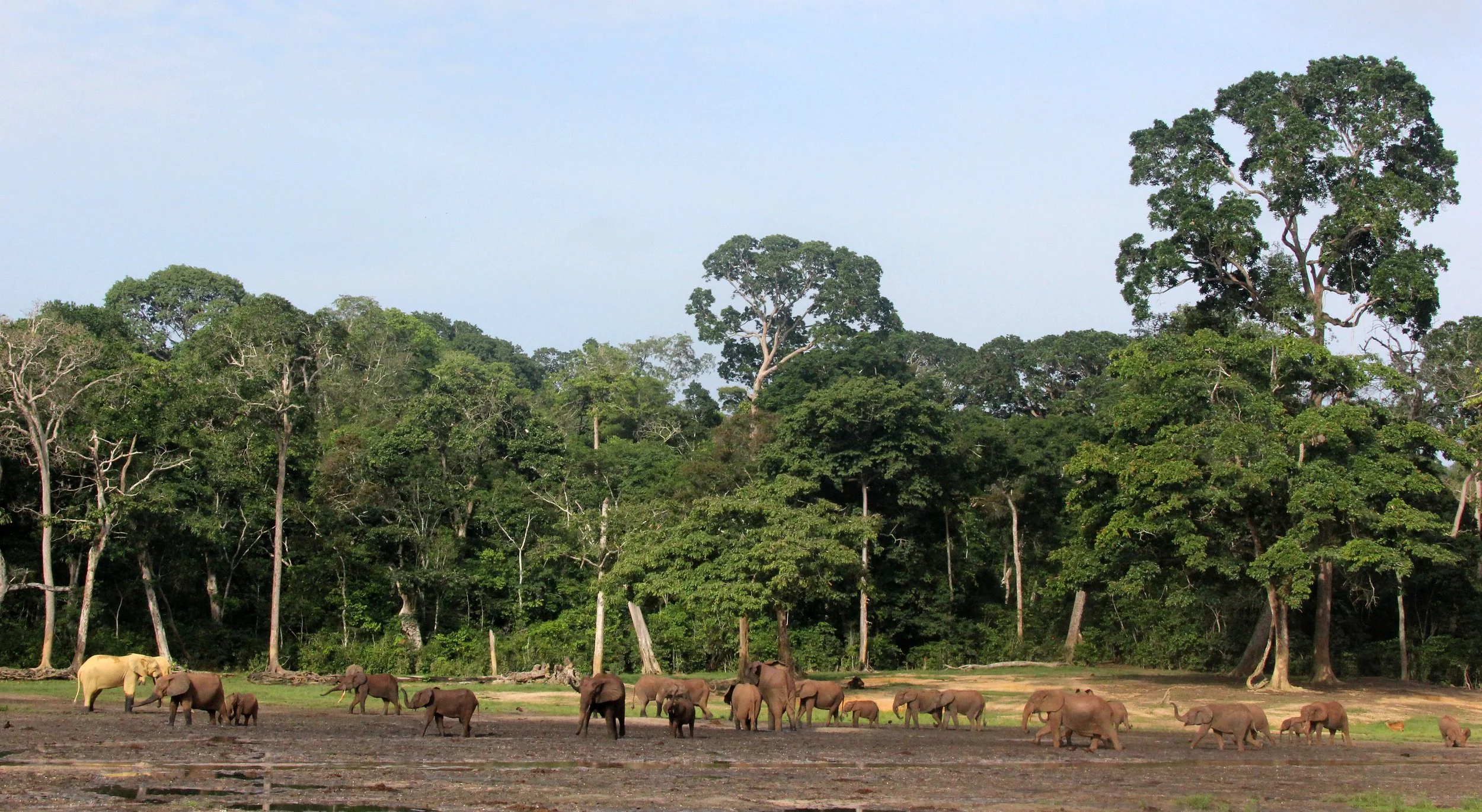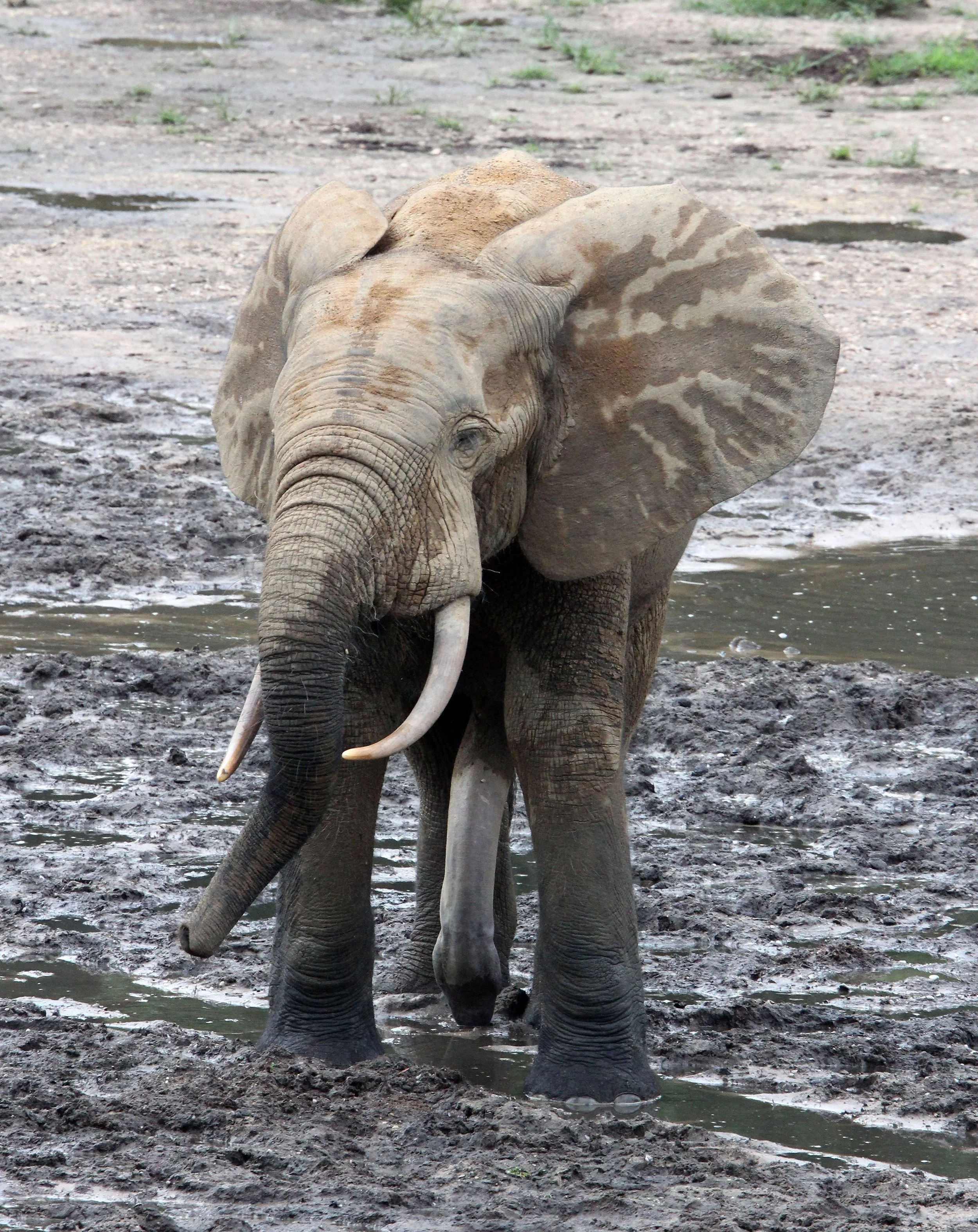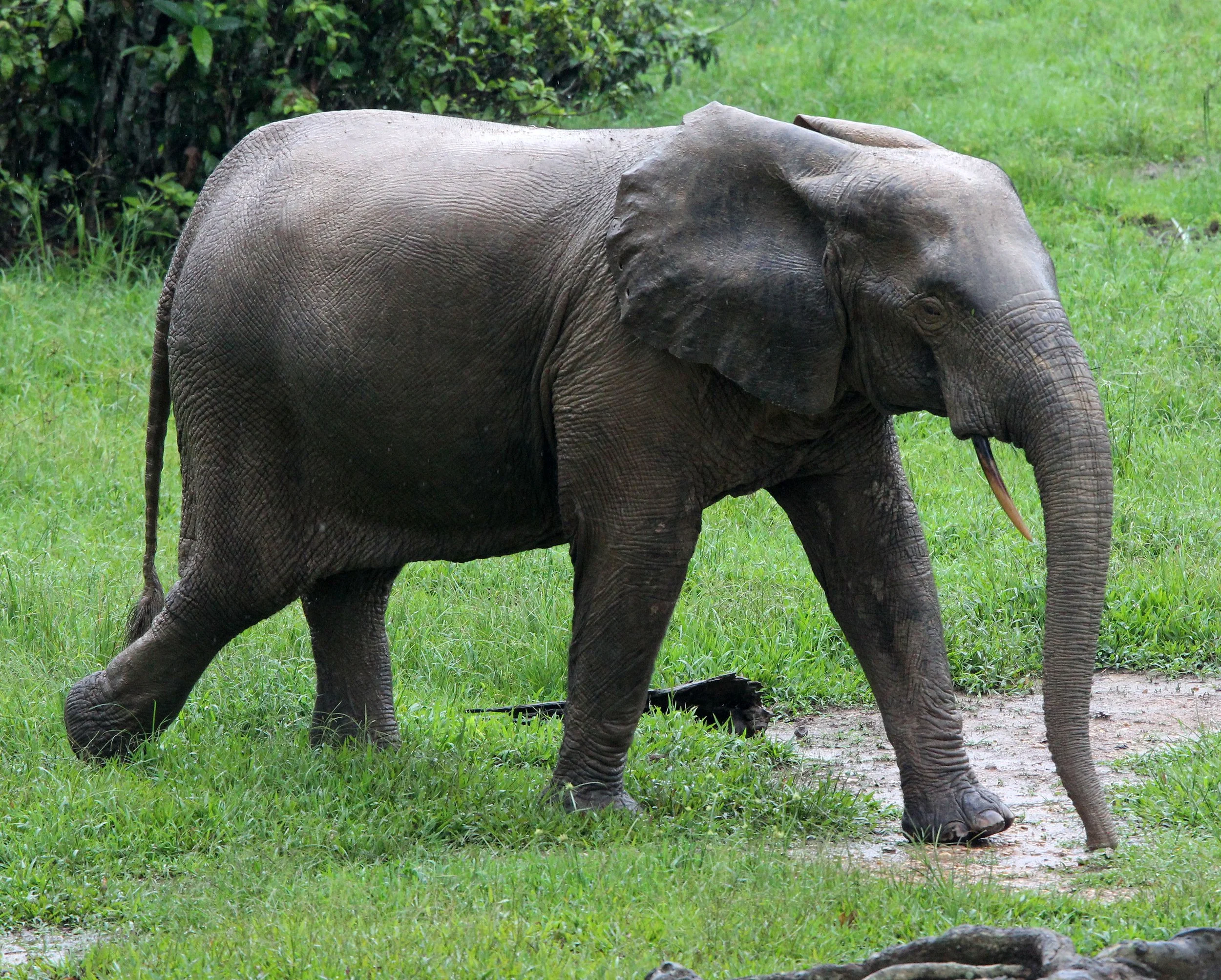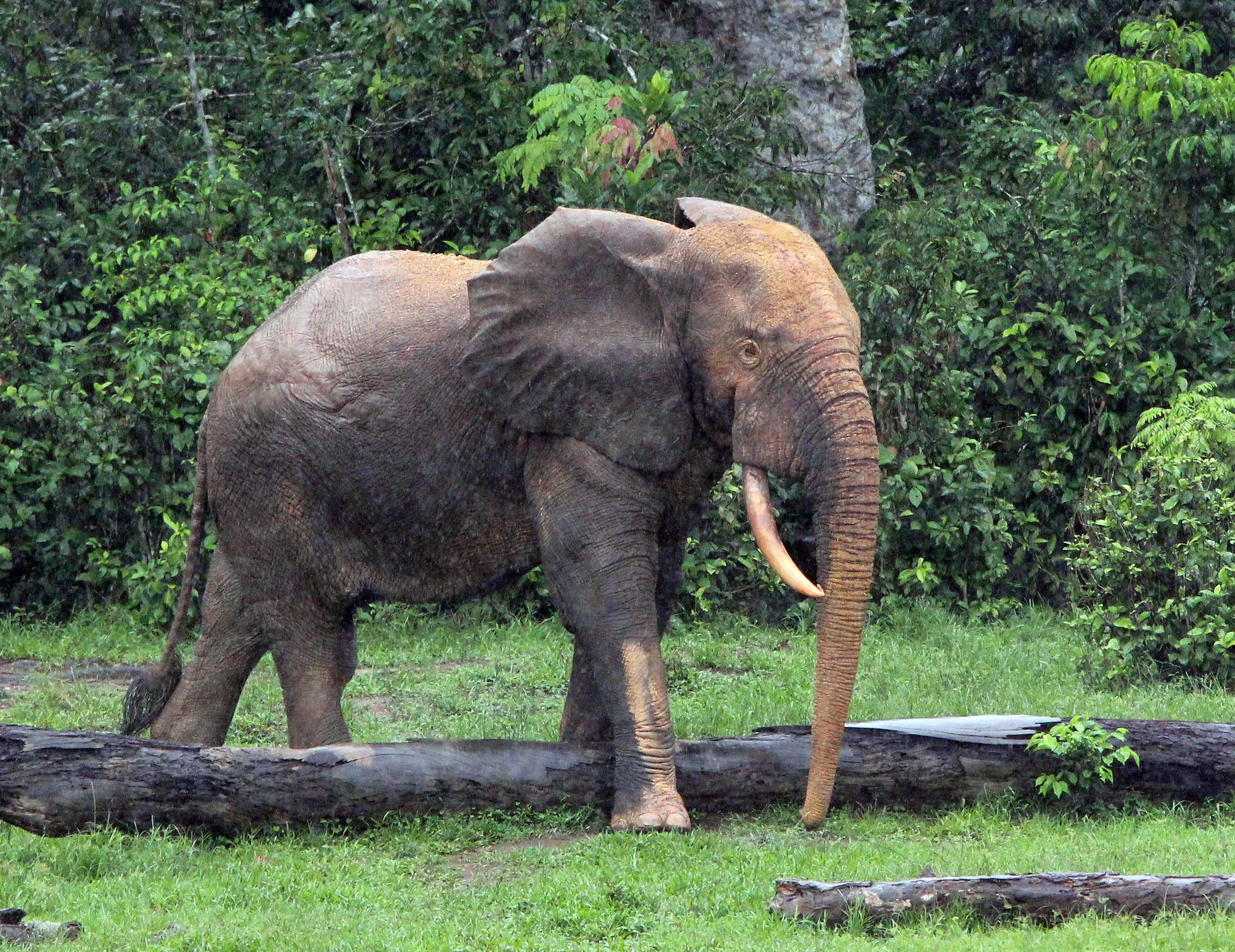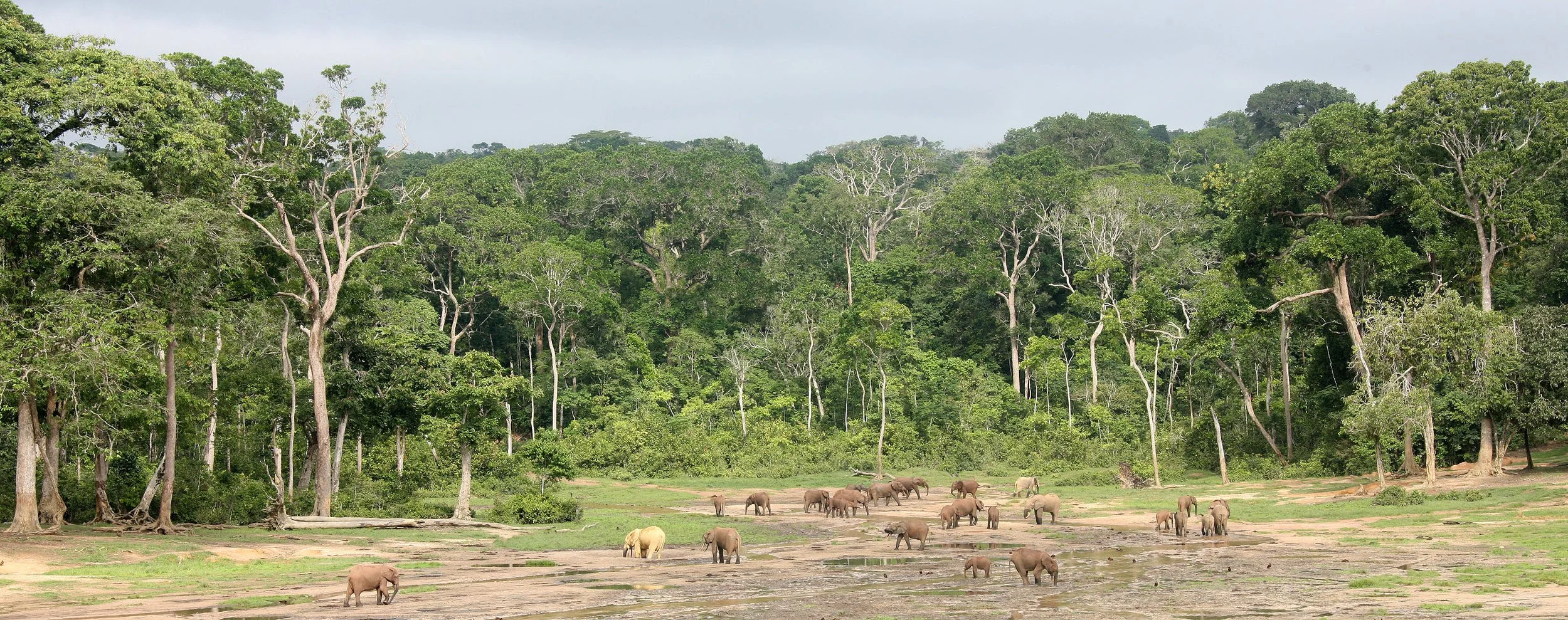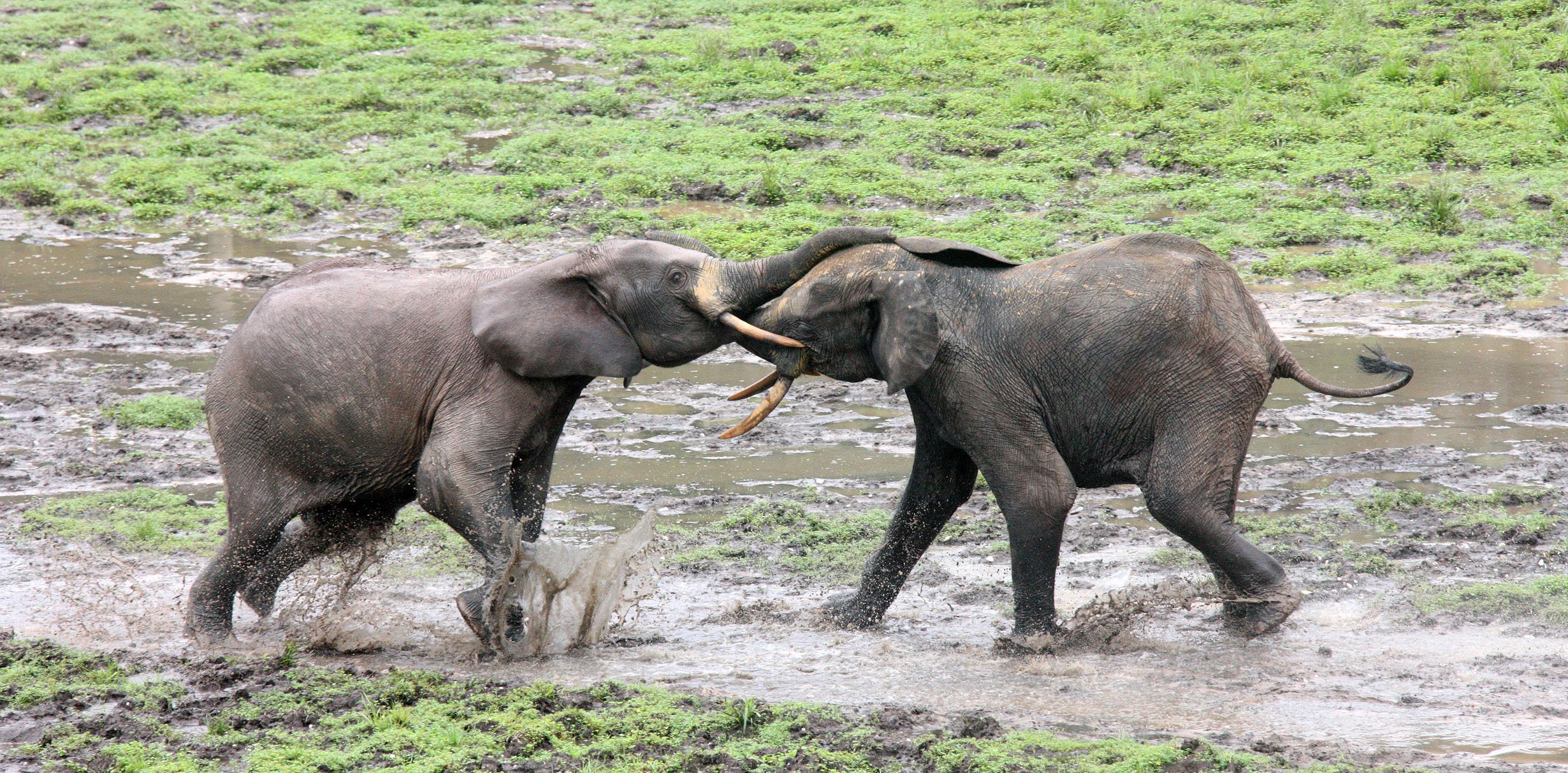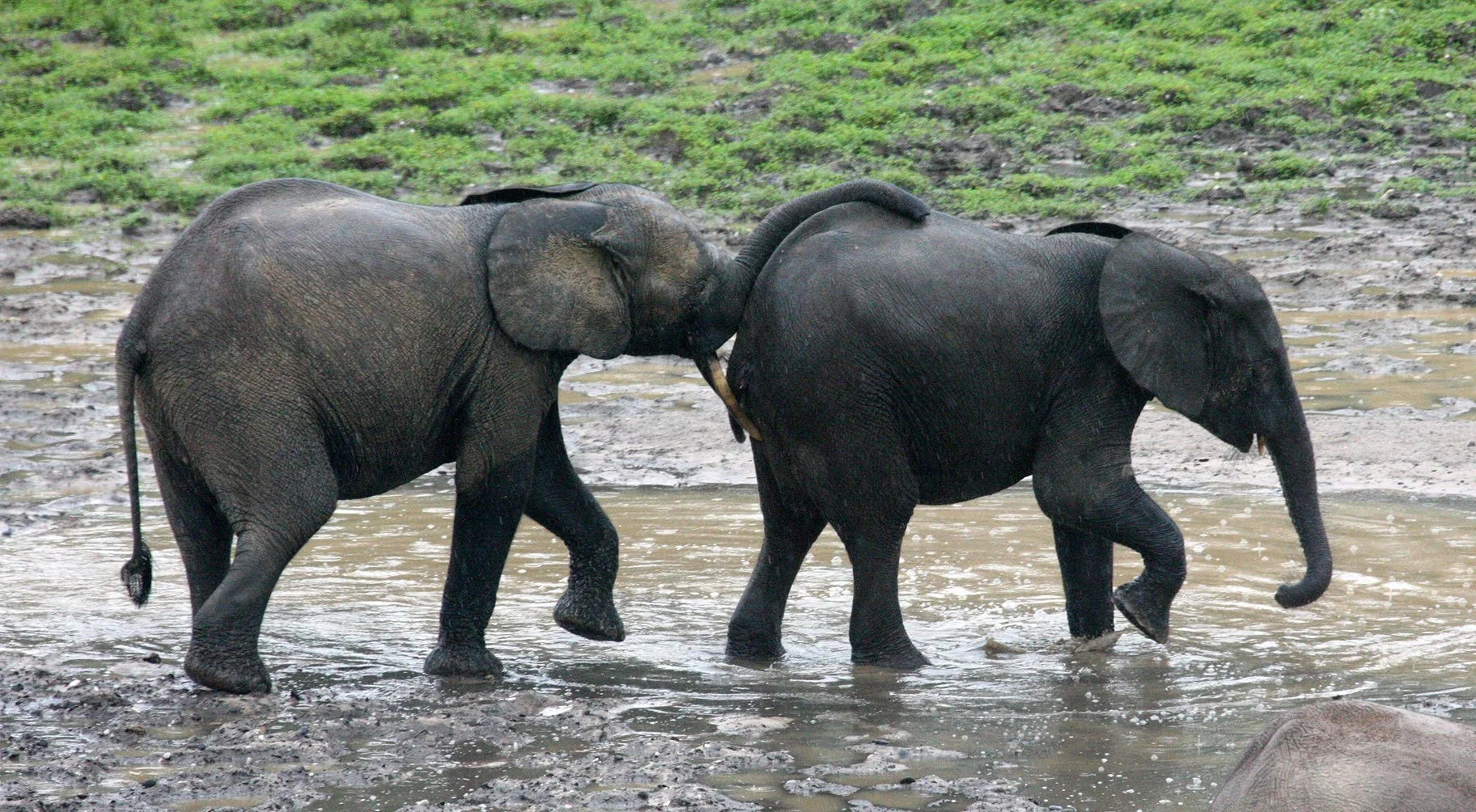
Forest Elephants
The African forest elephant (Loxodonta cyclotis) is one of the two living African elephant species. It is native to humid forests in West Africa and the Congo Basin. It is the smallest of the three living elephant species, reaching a shoulder height of 2.4 m (7 ft 10 in). Both sexes have straight, down-pointing tusks, which erupt when they are 1–3 years old. It lives in family groups of up to 20 individuals. Since it forages on leaves, seeds, fruit, and tree bark, it has been referred to as the 'megagardener of the forest'. It contributes significantly to maintain the composition and structure of the Guinean Forests of West Africa and the Congolese rainforests.
The first scientific description of the species was published in 1900. During the 20th century, overhunting caused a sharp decline in population, and by 2013 it was estimated that less than 30,000 individuals remained. It is threatened by habitat loss, fragmentation, and poaching. The conservation status of populations varies across range countries. Since 2021, the species has been listed as Critically Endangered on the IUCN Red List.
Loxodonte was proposed as the generic name for African elephants by Frédéric Cuvier in 1825. This name refers to the lozenge-shaped enamel of the molar teeth, which differs significantly from the shape of the Asian elephant's molar enamel. Loxodonte was latinized to Loxodonta by an anonymous author in 1827.
Elephas (Loxodonta) cyclotis was the scientific name proposed by Paul Matschie in 1900 who described the skulls of a female and a male specimen collected by the Sanaga River in southern Cameroon.
Populations of the African forest elephant in Central Africa range in large contiguous rainforest tracts from Cameroon to the Democratic Republic of the Congo, with the largest stable population in Gabon. where suitable habitat covers 90% of the country.
However, it is estimated that the population of African forest elephants in central Africa declined by around 86% in the 31 years preceding 2021 owing to poaching and loss of habitat. In addition, Cameroon, Congo and the Central African Republic have suffered from high levels of conflict. The first survey in 30 years in 2021, by the Wildlife Conservation Society and the National Parks of Gabon, reported an estimated 95,000 forest elephants in Gabon. Prior to this the population had been estimated at 50,000 to 60,000 individuals.
They are also distributed in the evergreen moist deciduous Upper Guinean forests in Ivory Coast and Ghana, in West Africa. The images in this gallery are from Dzangha Bai in Central African Republic.


















































































































































































































